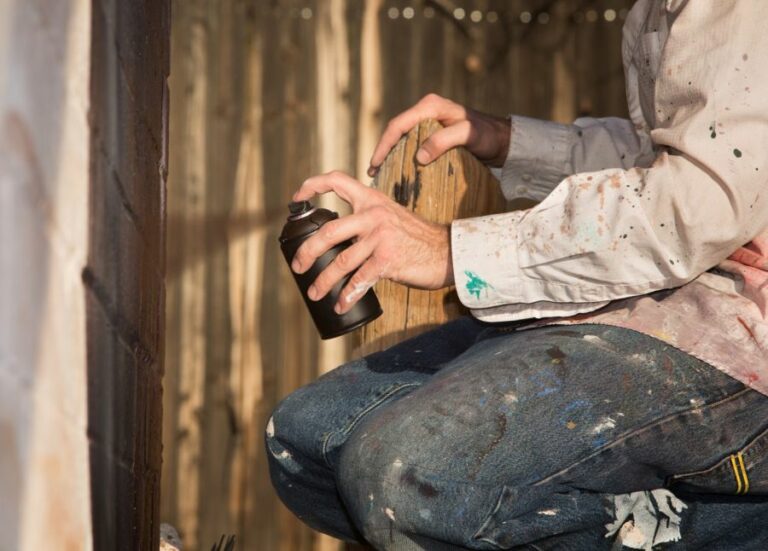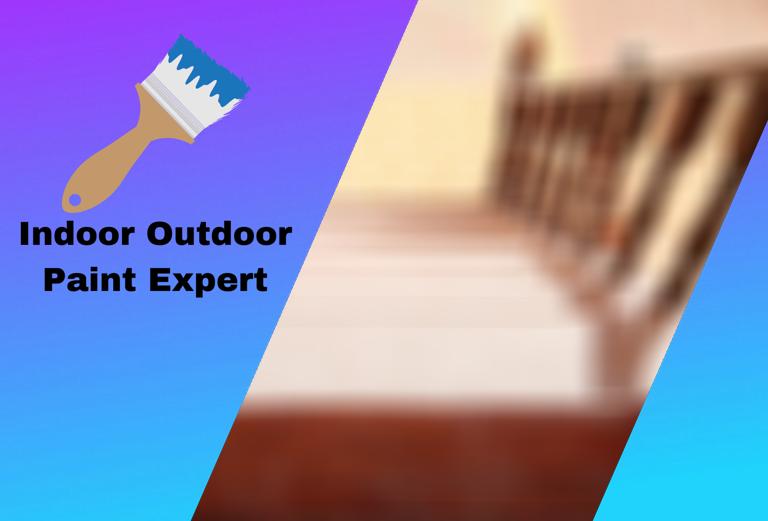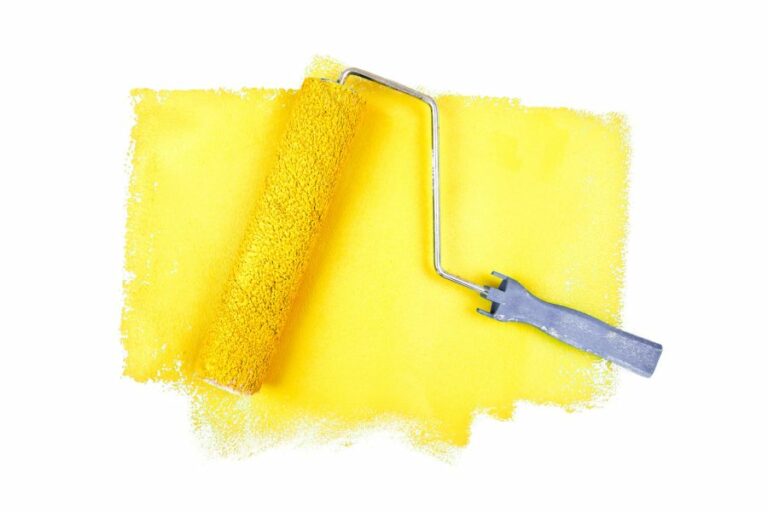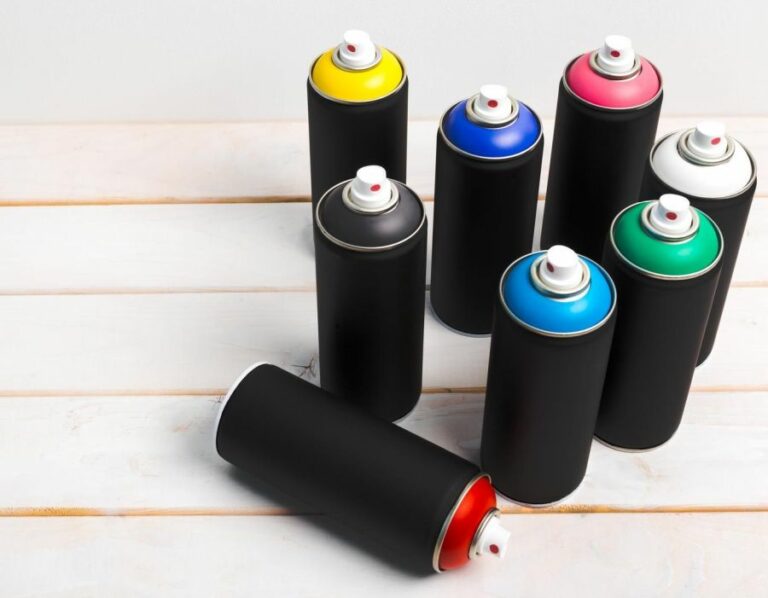Outdoor Paint Finishes, 25 Things You Should Know
When it comes to choosing outdoor paint finishes for your home, it’s crucial to consider both aesthetics and durability. Luckily, you’ve come to the right place. We have the know-how and expertise to guide you through selecting the perfect finish for your exterior painting project.
Outdoor paint finishes:
Outdoor paint finishes include flat, low-sheen, semi-gloss, and gloss finishes, each with unique qualities and applications. Flat paint is ideal for hiding surface imperfections, while low-sheen paint is versatile and works well on exterior walls, trim, and doors. Semi-gloss paint is suitable for moisture-exposed surfaces like doors, window trims, and shutters, and gloss paint is best for surfaces requiring frequent cleanings, such as doors, railings, and trim.

Love giving your outdoor spaces a fresh new look? Discover various outdoor paint finishes to transform your exteriors, from attractive color palettes to durable formulations. Read on for expert advice, valuable tips, and inspiring ideas to create a long-lasting, weatherproof haven!
Contents
- 1 Exterior Paint Finishes and Coatings
- 2 What is the Optimal Finish for Exterior Paint Applications?
- 3 Which Exterior Finish Holds the Highest Popularity?
- 4 What is the Ideal Paint Choice for Outdoor Applications?
- 5 Which Paint Finish is Suitable for an Exterior Porch?
- 6 Which Exterior Paint Has the Longest Durability and Lasting Performance?
- 7 Which Kind of Paint is Most Suitable for Exterior Trim Applications?
Exterior Paint Finishes and Coatings
A well-executed painting job can significantly improve the exterior of any building, whether it’s a house, a fence, or an entire commercial structure. There are countless paint finishes to choose from, each with its unique qualities and advantages.
• Types of Outdoor Paint Finishes
1. Flat Paint Finish
Flat paint, also known as matte paint, has a non-reflective finish that makes it ideal for hiding surface imperfections. Due to its ability to disguise blemishes, this paint finish is an excellent choice for surfaces that might have some inconsistencies.
Recommended application: Flat paint is best suited for exterior walls, especially those with visible imperfections. However, be aware that flat paint is less durable than other finishes, making it less suitable for high-traffic areas or surfaces that will come into frequent contact with water or moisture.
2. Low-Sheen Paint Finish
Low-sheen paint, sometimes called satin paint, provides a slight sheen when it dries. This subtle shine offers a visually appealing finish that lies between the flat and glossy paint types.
Recommended application: Low-sheen paint is a versatile option that works well on exterior walls, trim, and doors. It provides better resistance to moisture and mildew compared to flat paint, making it an excellent choice for exterior surfaces that experience moderate exposure to weather elements.
3. Semi-Gloss Paint Finish
As the name suggests, semi-gloss paint has a more reflective finish than low-sheen paint but less than high-gloss paint. It provides a beautiful shine while maintaining a degree of durability that helps it withstand wear and tear from weather and daily use.
Recommended application: Semi-gloss paint is an excellent choice for surfaces that are exposed to both moisture and frequent touches, such as doors, window trims, and shutters. It is also a popular choice for garage doors and outdoor furniture, thanks in part to its ease of cleaning.
4. Gloss Paint Finish
High-gloss paint is known for its mirror-like shine, which can make a bold statement on any exterior surface. This paint finish is highly durable, and as a result, gloss paint is resistant to many outdoor elements, including moisture, mildew, and general wear-and-tear.
Recommended application: Gloss paint is best applied to surfaces that require frequent cleanings, such as doors, railings, and trim.
However, due to its reflective nature, gloss paint might highlight surface imperfections, so it is essential to ensure the surface is properly prepared before applying a high-gloss finish.
• Choosing the Right Paint Finish for Your Project
Now that you’re familiar with different types of outdoor paint finishes, here are some factors to consider when determining which paint finish is best suited for your specific project:
– Durability
Consider the level of wear-and-tear the surface will endure. Lower-sheen finishes, like flat and low-sheen paint, are less durable and might not withstand weather conditions and frequent touch, as well as their glossier counterparts.
For surfaces prone to dirt, moisture, and mildew, opt for a higher sheen finish, like semi-gloss or gloss paint.
– Surface Condition
Evaluate the condition of the surface you plan to paint. If there are noticeable imperfections, a lower-sheen paint, like flat or low-sheen, can help mask those irregularities. Conversely, semi-gloss and high-gloss paints may accentuate surface imperfections.
– Aesthetic Preferences
Your personal style and design preferences will also play a role in selecting the proper paint finish. If you prefer a more muted, subtle aesthetic, a lower-sheen finish might be the best choice. For a stand-out, bold look, a semi-gloss or high-gloss finish would be ideal.
• Proper Surface Preparation for Outdoor Painting
Before you start any outdoor painting project, it’s crucial to properly prepare the surface. Some key steps include:
- Cleaning: Thoroughly clean the surface by removing dirt, debris, and mildew to ensure proper paint adhesion.
- Sanding: Sand any rough areas and make sure the entire surface is smooth.
- Repairing: Fill in any cracks or holes with an appropriate patching material.
- Priming: Apply a high-quality exterior primer to enhance paint adhesion and overall durability of the paint job.
By following these steps, you will ensure the longevity and beauty of your outdoor paint project, regardless of the paint finish you choose.
• Conclusion
Selecting the appropriate outdoor paint finish for your project is essential for achieving a visually appealing result that will also withstand time and weather elements. Consider the durability, surface condition, and your personal aesthetic preferences when making your decision.
By selecting the right paint finish and properly preparing the surface, you’ll be well on your way to accomplishing a beautiful and long-lasting outdoor paint job.
What is the Optimal Finish for Exterior Paint Applications?
Choosing the right finish for exterior paint is crucial for both appearance and durability. The type of finish you select can significantly affect the longevity and appearance of your paint job.
• Types of Exterior Paint Finishes
Before discussing the best finish for exterior paint, let’s examine the main types of paint finishes available on the market:
– Flat or Matte Finish
Flat or matte finish is characterized by a non-reflective and smooth appearance. It is an excellent choice for hiding minor imperfections and blemishes on exterior surfaces like vinyl siding, brick, and stucco.
Flat finish paint is highly porous and not highly recommended for highly trafficked areas or surfaces prone to dirt and water exposure. Examples of flat finish paints include Benjamin Moore Natura Waterborne Interior Paint and Sherwin-Williams Emerald Exterior Acrylic Latex Paint.
– Satin or Eggshell Finish
Satin or eggshell finish strikes a balance between flat and glossy finishes. Satin finish paints are easier to clean than flat finishes and are moderately resistant to moisture and dirt.
Some homeowners prefer this finish since it provides a subtle sheen to the exterior surfaces without the high reflectivity of glossier options. Brands offering satin finish exterior paints include Behr Marquee Exterior Paint & Primer in One and Valspar Duramax Exterior Paint.
– Semi-Gloss Finish
Semi-gloss finish is characterized by a distinct sheen and reflective quality. It is more resistant to dirt, moisture, and mildew compared to flat and satin finishes. Due to its highly reflective surface, a semi-gloss finish can accentuate imperfections in the surface.
This finish is suitable for surfaces like doors, shutters, trim, and railings. Notable semi-gloss finish exterior paints include PPG Timeless Exterior Paint and Primer and Glidden Premium Exterior Paint.
– Gloss Finish
Gloss finish paints offer the highest level of reflectivity and sheen. They are very durable, and their smooth surface ensures easy cleaning. Gloss finish is ideal for surfaces that require both protection and an eye-catching appearance, such as front doors and trim.
Examples of gloss finish exterior paints include Sherwin-Williams Resilience Exterior Acrylic Latex Paint and Benjamin Moore Aura Grand Entrance.
• Factors to Consider When Choosing the Best Exterior Paint Finish
Now that we have explored the various types of exterior paint finishes, it’s crucial to consider different factors while selecting the perfect finish for your project:
– Aesthetic Appeal
The finish you choose should enhance the overall appearance of your home’s exterior. Flat finishes tend to give a subtle, elegant look, while glossier finishes create a more vibrant, polished appearance. Consider how the finish will complement the architectural style and colors of your home.
– Surface Material
Some materials, like stucco or brick, may absorb a glossier finish, requiring more coats of paint than a flat or satin finish. On the other hand, surfaces like metal or PVC could benefit from a glossier finish to provide a better seal and a smoother appearance.
– Climate and Exposure
The climate and the level of exposure to various environmental elements should also influence your choice of finish. If your exterior surfaces are prone to regular moisture or dirt exposure, a glossier finish will ensure better protection and easier maintenance.
– Durability and Maintenance
Glossier finishes are known for their durability and ease of cleaning, making them suitable for high-traffic areas, doors, and trim. However, if you are seeking a low-maintenance finish that can hide imperfections and touch-ups well, flat finishes make for an excellent choice.
• Conclusion: Choosing the Best Exterior Paint Finish
Ultimately, the best finish for exterior paint depends on your unique requirements and preferences. For most residential projects, a satin or eggshell finish is a reliable bet for a balance between appearance, durability, and maintenance.
However, when working on more specific applications such as doors, trim, or water-exposed surfaces, it is advisable to opt for a semi-gloss or gloss finish.
With this comprehensive overview of exterior paint finishes, you should be well-equipped to make an informed decision and achieve the perfect look and longevity for your home’s exterior.
For further insights on exterior painting techniques and materials, the US Environmental Protection Agency offers valuable resources and guidelines.
Finish Type | Recommended Use | Pros | Cons |
|---|---|---|---|
Flat or Matte | Siding and other large surfaces, prone to fading from direct sunlight | Hides surface imperfections, minimizes glare | Not very durable, hard to clean |
Satin or Eggshell | Siding, facades, trim, shutters | Easy to clean, resists mildew, more durable than flat/matte | Shows surface imperfections more readily |
Semi-gloss | Trim, windows, doors, gutters | Highly durable, easy to clean, resists mildew and moisture | Can highlight surface imperfections |
Gloss or High Gloss | Doors, trim, accent pieces, metal or wood surfaces | Most durable, easy to clean, resists mildew and moisture | Very shiny, can accentuate surface imperfections |
Which Exterior Finish Holds the Highest Popularity?
When it comes to exterior finishes for homes and buildings, the variety of choices can feel overwhelming. However, understanding the key features and benefits of the most popular options can help make the decision-making process easier.
• Stucco: The Top Choice for Exterior Finish
Stucco, a durable and attractive exterior finish, is the top choice for homeowners and builders alike. This time-tested material is composed of cement, sand, lime, and water and provides a seamless, weather-resistant barrier for the building’s exterior.
Stucco is particularly popular in regions with hot, dry climates, such as the American Southwest and Mediterranean countries.
– Benefits of Stucco
Stucco offers several key benefits that contribute to its popularity:
- Durability: Stucco is incredibly resilient, with the ability to withstand harsh weather conditions, including rain, hail, and extreme heat.
- Low Maintenance: Once applied, stucco requires minimal upkeep. Periodic inspections to ensure no cracks have formed are recommended, but stucco generally only needs repainting every 5-10 years.
- Energy Efficiency: The thick layer of stucco helps insulate the building, keeping it cooler in the summer and warmer in the winter, potentially reducing energy consumption and costs.
- Aesthetic Appeal: Stucco can be finished in a variety of textures and colors to suit an individual’s design preferences. The customization options, combined with its clean and seamless appearance, make stucco a sought-after choice for both traditional and contemporary architecture.
The Portland Cement Association provides great resources and information for those interested in further exploring stucco as an exterior finish option.
• Other Popular Exterior Finishes
While stucco takes the top spot in popularity, there are several other exterior finishes worth considering. Each has its advantages and drawbacks, so it’s essential to choose the best option based on specific needs and preferences.
– Vinyl Siding
Vinyl siding is a popular choice for its affordability, minimal maintenance requirements, and versatility in design. However, vinyl can be prone to cracking and warping, particularly in fluctuating temperature conditions.
– Fiber Cement Siding
Fiber cement siding, also known as Hardie board or Hardie plank, is composed of cement, sand, and cellulose fibers. This material is known for its durability, fire resistance, and low maintenance requirements. However, it may be more expensive than other siding options.
– Wood Siding
Wood siding has a timeless, natural aesthetic appeal that many homeowners find desirable. There are multiple types of wood siding, such as shakes, shingles, and clapboard, providing various design options.
Wood siding does require ongoing maintenance, including painting, staining, and sealing to prevent rot and insect damage.
– Brick and Stone Veneer
Brick and stone veneer finishes offer a classic, sophisticated look to a home’s exterior. These materials are durable, weather-resistant, and may even increase a home’s value. However, brick and stone veneer can be costly to install and may require skilled professionals for proper installation.
• Making the Right Choice for Your Exterior Finish
Selecting the right exterior finish depends on the individual’s preferences, budget, and specific needs. While stucco is the most popular choice for its durability, customization options, and energy efficiency, it may not be the best fit for everyone.
When choosing an exterior finish, consider factors such as climate, desired maintenance level, architectural style, and overall aesthetic preferences.
For example, vinyl siding might be more suitable for those seeking a lower-cost option with minimal maintenance, while wood siding may be preferred by those who appreciate a more natural, nostalgic appeal.
Ultimately, the most popular exterior finish may not always be the ideal choice for each situation. Careful research, understanding the benefits and drawbacks of each option, and considering individual needs and preferences will lead to the selection of the perfect exterior finish for any home or building.
What is the Ideal Paint Choice for Outdoor Applications?
Whether you are looking to refresh the exterior of your home, update the look of garden furniture, or give a new lease of life to an old fence, choosing the right paint for outdoor projects is crucial. In this comprehensive guide, you will find all the information needed to make the best decision for your project.
• Understanding Exterior Paint Types
The first step in making the right decision is to understand the different types of exterior paint available in the market. There are three main categories of paint that are suitable for outdoor use: latex, oil-based, and elastomeric.
– Latex Paint
Latex paint, also known as water-based or acrylic paint, is the most popular choice for exterior projects due to its durability, ease of use, and resistance to fading and mildew. It dries quickly and has low levels of volatile organic compounds (VOCs), which means it is less harmful to the environment and exhibits minimal odor during application.
Additionally, latex paint is easy to clean up with soap and water. It is important to note that latex paint is best applied when the temperature is between 50 and 85 degrees Fahrenheit.
This guide from EPA provides more information on VOCs and their impact on the environment and human health.
– Oil-Based Paint
Oil-based paint, also known as alkyd paint, is more durable than latex paint and stands up well to weather and abrasions. It contains more VOCs than latex paint, making it less eco-friendly and exhibiting a stronger odor during application.
Oil-based paint also takes longer to dry and requires the use of solvents, such as paint thinner or mineral spirits, for clean-up. This type of paint is often used for exterior trim, doors, and metal surfaces due to its resistance to chipping and better adhesion.
– Elastomeric Paint
Elastomeric paint is a high-performance coating made with synthetic rubber or acrylic polymers. This type of paint is specifically designed to provide a waterproof and weather-resistant finish that can expand and contract with temperature fluctuations without cracking or peeling.
Elastomeric paint is a great option for surfaces with existing cracks or stucco exteriors, as it can bridge gaps and maintain a uniform appearance. However, this paint is generally more expensive than latex or oil-based paints and requires a specific application process.
• Factors to Consider When Choosing Outdoor Paint
There are several factors to consider when choosing the best paint for your outdoor project. These factors include the material and condition of the surface, your specific needs, and the local weather conditions.
– Surface Material and Condition
The type of surface you are painting will often dictate the best paint choice. For example, latex paint is ideal for most exterior surfaces, such as wood, vinyl, and fiber cement siding, while oil-based paint is recommended for metal surfaces and exterior trim.
Elastomeric paint is an excellent choice for stucco or surfaces with existing cracks.
It is essential to properly prepare the surface before applying paint by cleaning it and removing any loose or peeling paint. Applying a primer may also be necessary, especially when changing paint types or painting over a dark color.
– Specific Needs
Certain outdoor projects may require specific features in the paint, such as mildew resistance or a particular finish. For example, if you live in a damp or humid climate, choosing paint with built-in mildew resistance can prevent mold and mildew growth, prolonging the paint’s lifespan.
If you want a specific finish, such as high gloss or a textured effect, be sure to choose a paint formulated for that finish.
– Local Weather Conditions
The local climate can impact the durability of your paint. Temperature fluctuations, humidity, and weather patterns like heavy rain or snow can affect how the paint performs over time.
For example, paint with higher resistance to fading is recommended in sunny climates, while mildew resistance is crucial in humid areas.
Always consult the paint label or manufacturer’s guidelines for recommended application conditions, and keep an eye on the weather forecast when scheduling your outdoor painting project.
• Conclusion and Recommendations
In conclusion, the best paint for outdoor projects ultimately depends on your specific needs, the material and condition of the surface, and the local weather conditions.
As a general guideline, latex paint is recommended for most exterior surfaces, oil-based paint works well for metal surfaces and trim, and elastomeric paint is ideal for surfaces with cracks or stucco exteriors.
It is crucial to properly prepare the surface and follow the paint manufacturer’s guidelines during application to ensure a long-lasting, durable finish. Finally, by considering local weather conditions and specific needs, you can ensure the chosen paint will perform well and stand the test of time.
Which Paint Finish is Suitable for an Exterior Porch?
Porch paint is a vital aspect of maintaining and enhancing the overall beauty of your house. A well-chosen paint finish not only offers protection against weather elements but also contributes to the aesthetic appeal of your home.
• A Brief Overview of Paint Finishes
Paint finishes are classified according to the amount of light they reflect. This can range from matte or flat, with little or no sheen, to high-gloss, a mirror-like reflective finish. Here is a quick guide to different types of paint finishes:
– Flat Finish
This finish has no sheen and tends to hide minor imperfections. Although flat paints are usually less durable, they provide a subtle, elegant look.
– Eggshell Finish
With a slight sheen, an eggshell finish is more durable than flat and is easier to clean. It is a popular choice for interiors, but it is not recommended for exterior porches as it does not hold up against wear and tear.
– Satin Finish
The satin finish offers a subtle sheen, which is more durable and versatile than an eggshell finish. It is easier to clean and can withstand moisture, making it a popular choice for exterior applications.
– Semi-Gloss Finish
Semi-gloss paints reflect a significant amount of light and are relatively easy to clean. This finish works well for areas that may be exposed to moisture, such as kitchens or bathrooms, but may not be ideal for exterior porches.
– High-Gloss Finish
This is the most reflective and durable finish. High-gloss paints are easy to clean and resistant to wear or damage. However, the high sheen can attract attention to imperfections and may not be ideal for an exterior porch.
• Factors to Consider When Choosing a Paint Finish for Exterior Porch
To choose the ideal paint finish for your exterior porch, you should consider the following factors:
– Porch Material
The type of material used for your porch will influence the paint finish you choose. Wood, masonry, metal, and composite materials have unique properties that require different approaches.
For example, wood surfaces may require a penetrating and protective finish, such as a stain or sealant, whereas masonry or concrete surfaces may need breathable, waterproof paint.
– Environmental Conditions
Weather elements, such as sunlight, heat, moisture, and wind, can affect the durability and appearance of paint finishes. For instance, high-gloss or semi-gloss finishes may provide better protection against the elements, but they tend to show more dust and dirt.
In rainy areas or regions with high humidity, consider paint finishes that can withstand moisture, such as satin or semi-gloss.
– Maintenance and Cleaning
Paint finishes can affect the ease of maintenance and cleaning. Durable finishes, such as semi-gloss or high-gloss, offer better resistance to stains, moisture, and damage and are easier to clean. However, they may not provide the desired visual effect, as they tend to make dirt or imperfections more visible.
– Aesthetic Preferences
Aesthetic preferences are subjective yet important when choosing a paint finish for an exterior porch. You may prefer a subtle, matte finish or a more vibrant, glossy finish, depending on your personal taste and the architectural style of your home.
It is also essential to consider the color scheme and overall design, as these can influence the perception of a paint finish.
• Recommended Paint Finishes for Exterior Porch
Based on the factors mentioned above and personal experience, here are recommended paint finishes for the exterior porch:
– Satin Finish
Satin finish provides a good balance between durability, ease of cleaning, and aesthetic appeal. It can withstand moisture and is easy to clean while offering a subtle sheen that can complement various architectural styles. Satin finish works well for porches made of wood, masonry, or composite materials.
– Semi-Gloss Finish
If you prioritize durability and ease of cleaning over a subtle appearance, a semi-gloss finish is a suitable option. It offers better protection against weather elements and is relatively easy to clean. This can be a wise choice for porches made of wood, metal, or composite materials.
However, keep in mind that it may reveal more imperfections and attract more dirt or dust.
In conclusion, selecting the right paint finish for your exterior porch involves careful consideration of factors such as porch material, environmental conditions, maintenance, and personal preferences. Satin and semi-gloss finishes are recommended for their balance of durability and aesthetic appeal.
Ultimately, choose a paint finish that best fits your needs and enhances the beauty of your home.
Which Exterior Paint Has the Longest Durability and Lasting Performance?
In the quest to find the longest-lasting exterior paint for one’s home, the array of options available can be overwhelming.
With numerous brands and types of paint on the market, making an informed choice can be the difference between a beautiful and long-lasting paint job and an expensive and short-lived one.
• Factors Affecting the Longevity of Exterior Paint
Before delving into the specific types of paint and their longevity, it is important to understand the factors that can affect the lifespan of your exterior paint job. Some of these factors include:
– Environmental Conditions
- Weather impact: The amount of sun, rain, and wind that the painted surfaces are exposed to can greatly affect their durability. Regions with harsh weather conditions, such as intense UV rays or heavy rainfall, will typically experience a shorter lifespan for their exterior paint.
- Temperature extremes: Fluctuating between extreme hot and cold temperatures can cause paint to expand and contract, leading to cracking and peeling over time.
– Surface Preparation
Proper surface preparation is a vital factor in ensuring the longevity of exterior paint. This includes cleaning the surface to remove dirt, mold, and mildew, proper scraping and sanding of any loose or peeling paint, and using a quality primer to ensure proper adhesion.
– Paint Quality
Investing in high-quality paint will almost certainly lead to a longer-lasting finish. Premium paints often contain better ingredients and formulations that offer increased durability, fade resistance, and better adhesion to the surface being painted.
• Types of Exterior Paint
When it comes to exterior paint, the two main types are oil-based (alkyd) and water-based (latex or acrylic).
– Oil-Based (Alkyd) Paints
Oil-based paints have been around for many years and were once the go-to option for exterior painting projects. They tend to offer great adhesion, are less affected by UV rays, and possess a naturally-created protective shell against the elements.
However, oil-based paints have some drawbacks, such as environmental concerns due to the presence of volatile organic compounds (VOCs), difficulty in cleaning, and longer drying times.
– Water-Based (Latex or Acrylic) Paints
Water-based paints, such as latex and acrylic, have increased in popularity over the years, mainly due to advancements in their technology and formulation.
These paints offer numerous benefits, such as ease of cleanup, quicker drying times, and low VOC emissions, making them a more environmentally-friendly choice. Improved technology has allowed water-based paints to achieve excellent adhesion, color retention, and durability, making them increasingly favored for exterior painting projects.
Given the advancements in water-based paint technology, many experts now recommend them as their first choice for long-lasting exterior paint.
• Recommended Brands for Long-Lasting Exterior Paint
Based on expert opinions and real-life experience, the following brands and paint lines offer exceptional durability, color retention, and overall longevity for exterior paint projects:
– Sherwin-Williams Duration
Duration by Sherwin-Williams is widely reputed for its excellent durability, self-priming capabilities, and resistance to both mold and mildew. The paint is 100% acrylic and offers advanced protection against UV rays, ensuring the color remains vibrant over time.
– Benjamin Moore Regal Select
The Regal Select paint line from Benjamin Moore boasts a durable finish and a stain-resistant formula, ensuring the painted surfaces remain in excellent condition. The paint also offers superior adhesion and color retention.
– PPG Timeless
PPG Timeless from PPG Paints provides excellent UV protection, color retention, and a durable finish. The paint is formulated with advanced technology to ensure long-lasting performance, even in harsh weather conditions.
• Conclusion
To increase the likelihood of a long-lasting exterior paint job, choose high-quality, water-based paint from reputable brands such as Sherwin-Williams, Benjamin Moore, or PPG Paints. Additionally, ensure that the proper surface preparation is conducted, as it is critical to the paint’s performance and longevity.
With the correct paint selection, proper preparation, and appropriate application techniques, homeowners can achieve a beautiful, long-lasting exterior paint finish that will withstand the test of time.
Which Kind of Paint is Most Suitable for Exterior Trim Applications?
A home’s exterior trim plays an essential role in safeguarding and adding visual appeal to the structure. Maintaining this trim helps preserve the property’s value while also preventing future costly repairs.
The type and quality of paint used for exterior trim greatly influence the paint’s durability, appearance, and lifespan. This article discusses the best types of paint for exterior trim and provides useful expert recommendations to achieve professional-looking results.
• Oil-Based Paints Versus Water-Based Paints
When choosing exterior trim paint, the primary decision lies in selecting between oil-based (alkyd) and water-based (latex/acrylic) formulations. Each has its benefits and drawbacks, and understanding these factors will help determine which paint type suits your needs.
– Oil-Based Paints
Oil-based paints, also known as alkyd paints, were once the preferred option for exterior trim due to their durability, smooth finish, and resistance to wear and tear. Some advantages of oil-based paints include the following:
- Excellent adhesion: Oil-based paints adhere well to a variety of surfaces, making them ideal for exterior trim that might have different materials.
- Long-lasting: These paints offer better resistance to weather elements, resulting in a longer-lasting final finish.
- Superior leveling: It provides a smooth and even finish, which is essential for the appearance of the trimwork.
However, oil-based paints have several downsides that may make them less attractive:
- Longer drying time: Oil-based paints can take up to 24 hours to dry, making the painting process more time-consuming and vulnerable to weather disruptions.
- Environmental concerns: These paints emit VOCs (Volatile Organic Compounds) that can contribute to air pollution and cause health issues. In some regions, they may be restricted or banned for residential use.
- Maintenance: Oil-based paint tends to become brittle over time, leading to cracking and chipping. It may also yellow when exposed to UV light over time, affecting the trim’s appearance.
– Water-Based Paints
Water-based, or latex/acrylic, paints have gained popularity in recent years due to technological advancements that have improved their quality and durability. Some advantages of water-based paints for exterior trim include:
- Faster drying time: With a drying time of only a few hours, water-based paints make it easier to complete painting projects quickly and with fewer weather-related interruptions.
- Low or no VOCs: These paints are more environmentally friendly, safer for the painter, and may be preferable if local regulations restrict oil-based paint usage.
- Ease of cleanup: Brushes and tools are easier to clean with water rather than paint thinner or mineral spirits required for oil-based paints.
- Flexibility: Water-based paints are more resistant to temperature changes, resulting in fewer cracks and better long-term performance.
Water-based paints do have a few drawbacks:
- May require more coats: For full coverage, especially on darker surfaces or when changing colors significantly, multiple coats may be necessary.
- Less resistance to stains and dirt: As they are not as hard as oil-based paints, water-based paints may be more susceptible to staining and dirt accumulation.
• Expert Recommendations for Exterior Trim Paint
As an experienced painter, I recommend using a high-quality, 100% acrylic exterior paint for most exterior trim projects. These paints provide an excellent balance of durability, adhesion, and environmental friendliness.
They also have superior color retention, helping to maintain the appearance of the trim over time.
A sheen level of either satin or semi-gloss is best for exterior trim, as these finishes offer a balance of durability and ease of cleaning while providing some shine to highlight the trim work.
High-gloss finishes can be more challenging to apply evenly, while flat or matte sheens may not provide the desired emphasis on the trim.
It is essential to thoroughly prepare the surface before painting, as this will significantly affect the quality and longevity of the final result. Follow these steps for the best results:
- Clean the surface thoroughly and remove any dirt, mildew, or debris.
- Repair any damaged areas, and fill and caulk gaps as necessary.
- Apply a high-quality primer, especially if the surface is bare or a significant color change is desired.
- Apply at least two coats of acrylic latex paint, allowing each layer to dry according to the manufacturer’s instructions.
In conclusion, choosing the best type of paint for exterior trim is crucial to ensure long-lasting protection and visual appeal for your home. While both oil-based and water-based paints have their merits, the advancements in acrylic latex paints now make them the top choice for most exterior trim projects.
With proper surface preparation, paint application, and ongoing maintenance, your home’s exterior trim will stay protected and aesthetically pleasing for years to come.







